
How wildfires have worsened in recent decades
How wildfires have worsened in recent decades
Earlier this month, residents throughout the Northeast woke to hazy orange skies as smoke blew down from a nearly 12-million-acre wildfire burning in Quebec, threatening national forests and property throughout the province. Thirteen American states issued air quality alerts, highlighting the impact of large-scale fires beyond their immediate path.
Wildfires are innate to forest ecosystems, clearing out dead debris and paving the way for new growth, but climate change has elongated dry seasons, increased temperatures, and widened the potential for large-scale wildfires. Beyond weather-related factors, the prevalence of insects like bark beetles damage trees and make them more prone to burning. Invasive vegetation such as cheatgrass also easily burns and contributes to spread.
Trees, traditionally a storage vessel for carbon, release carbon immediately when burning and during decomposition. The EU's Copernicus Atmosphere Monitoring Service estimated that global wildfires in 2022 released 1,455 megatonnes of carbon emissions. Black carbon, or soot, can also travel beyond wildfire zones, absorbing sunlight and warming the earth further.
Beyond the environmental threats, the widening reach of wildfires threatens the displacement of countless residents. Despite this, people continue moving to wildfire-prone areas, putting a growing population at risk of longer fire seasons and associated health risks.
Stacker cited data from the National Interagency Fire Center, National Oceanic and Atmospheric Administration, and the California Department of Forestry and Fire Protection to visualize how the spread of wildfires has worsened in recent years.
You may also like: How climate change impacts extreme weather across America
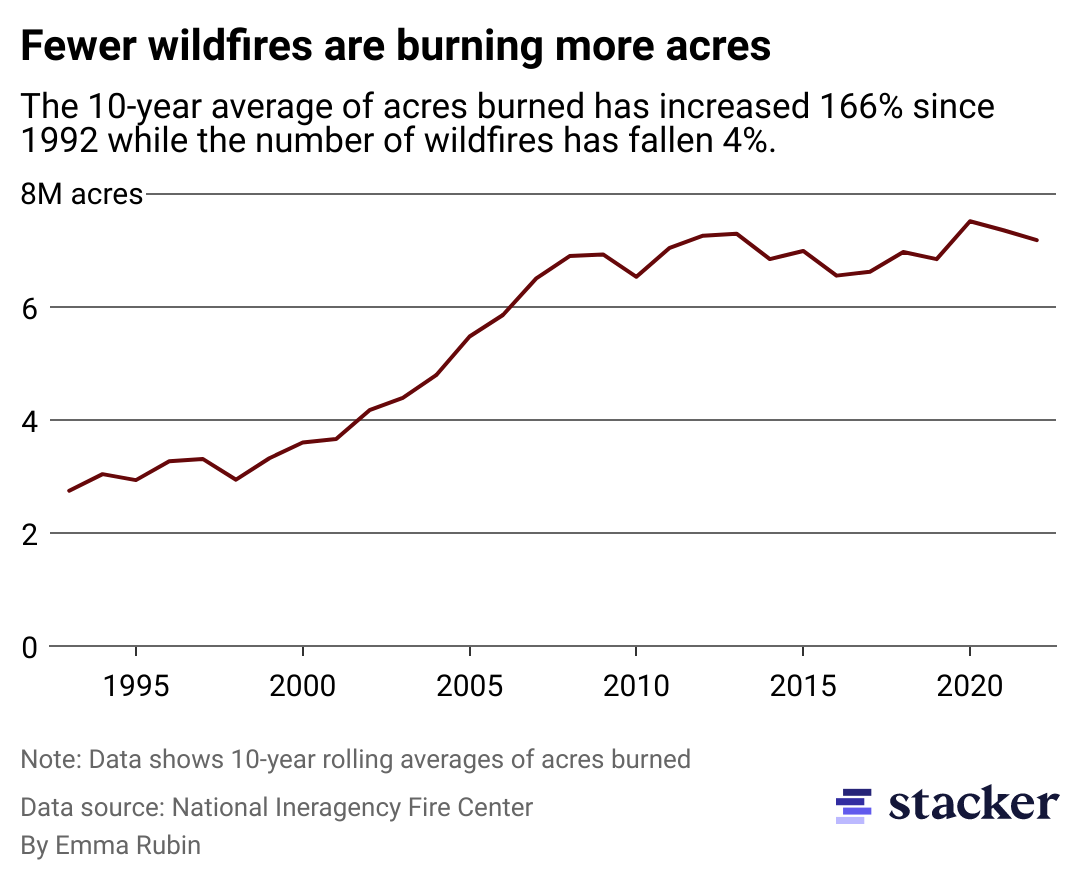
The number of wildfires is decreasing, but more acres are burning
Throughout the mid-20th century, forest management largely focused on preventing forest fires of all scales. Smokey the Bear was a national mascot for fire prevention, overseeing a multi-decade decrease in the number and average size of fires. But without regular fires, debris built up. This, combined with other environmental factors, eventually fueled costlier, large-scale blazes that have come to define the current wildfire season.
Despite having nearly 10,000 fewer fires per year on average from 2011-2021 compared to 1983-2010, the average acreage burned by those fires per year has more than doubled. From 1983-2010, the average number of acres burned per year was about 4.4 million. That number has jumped to 7.5 million acres per year for the 2011-2021 time period.
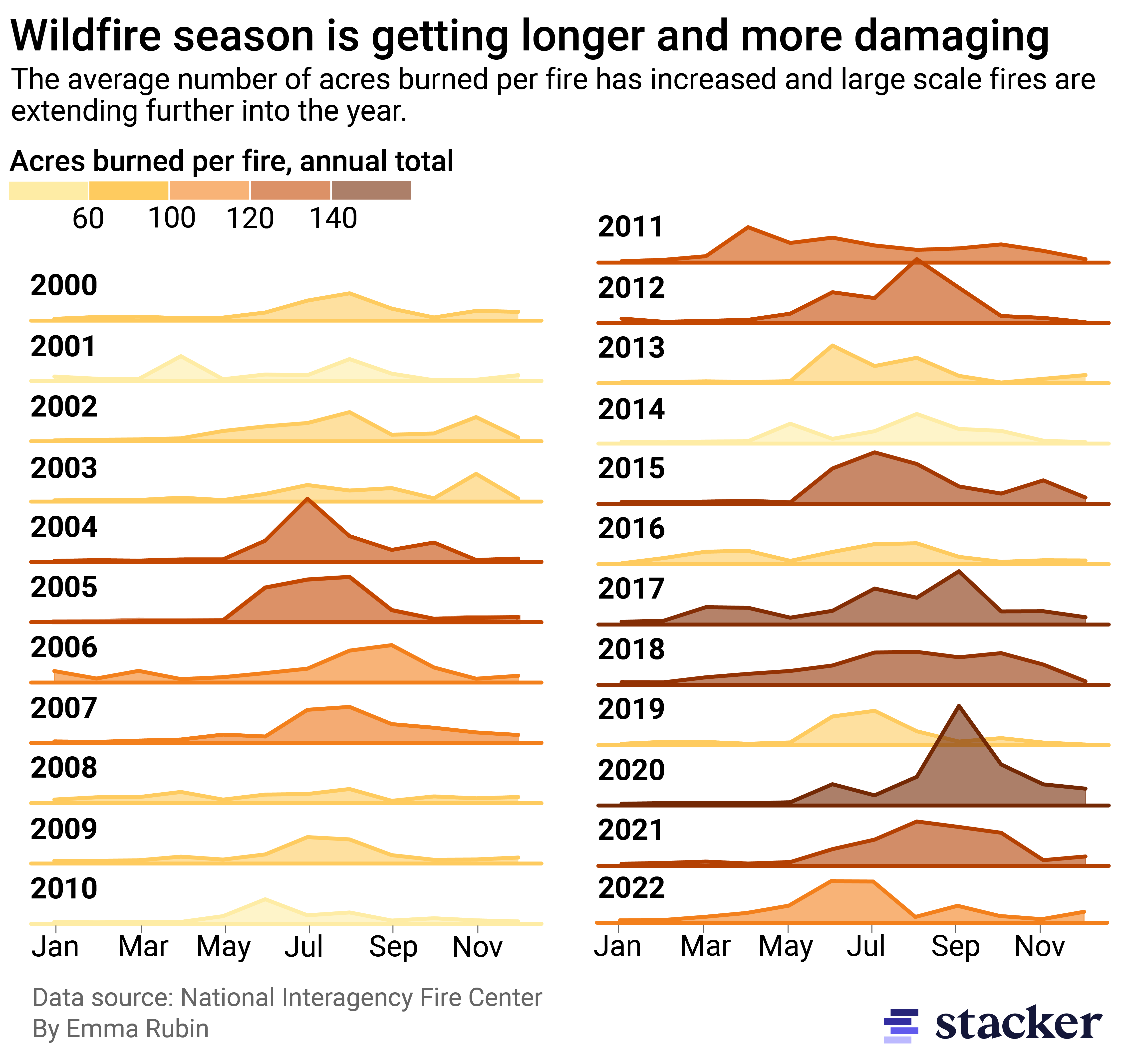
Wildfire seasons are getting longer
The total acres burned by wildfires in December 2020 was three times greater than the 10-year average for the month. The following year also experienced a damaging December, with a less extensive but still above-average spread covering 336,984 acres. Wildfire season traditionally lasts May through October, but shorter winters and earlier snow melts have extended wildfire risk. 2021 set a record for days at preparedness level 5, the highest alert for wildfire risk.
The USDA Forest Service warned in 2021, "For years, agencies relied on seasonal firefighters for summer months, but now that wildfires are burning into the winter, they need to reevaluate their hiring plans."
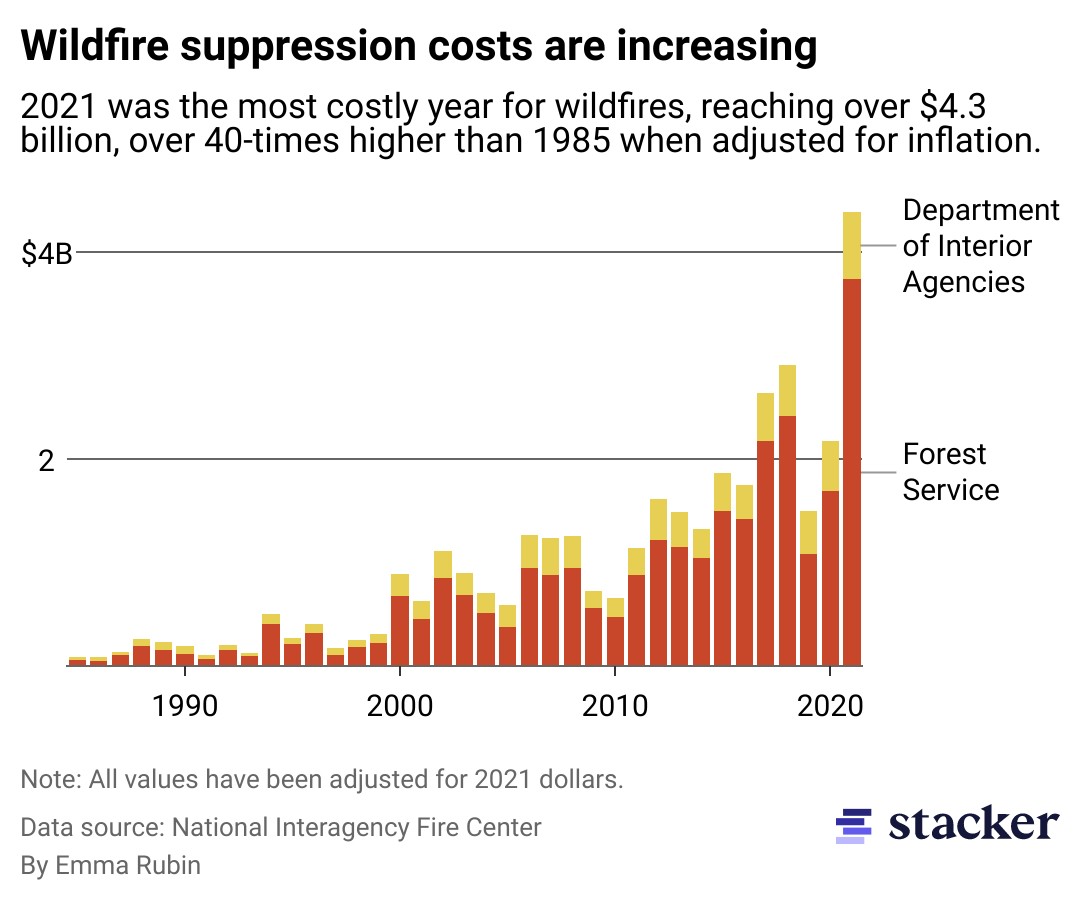
Wildfire suppression costs have risen by billions of dollars
With the increasing severity of wildfires every year, it follows that more resources are required to tame the blazes. In 1999, just before the turn of the century, the Forest Service and all other Department of the Interior agencies spent a combined $515.5 million on wildfire suppression. During the course of the last decade, the average cost of wildfire suppression has skyrocketed to nearly $2.1 billion annually. The Forest Service carries the brunt of this cost, contributing approximately three-quarters of the funds each year.
Though there is not currently an official tracking mechanism for the cost of wildfire damages, academics across the country have attempted to estimate the economic impact of wildfires. In 2020, a team of researchers estimated that the 2018 California wildfires caused $148.5 billion in economic damages.
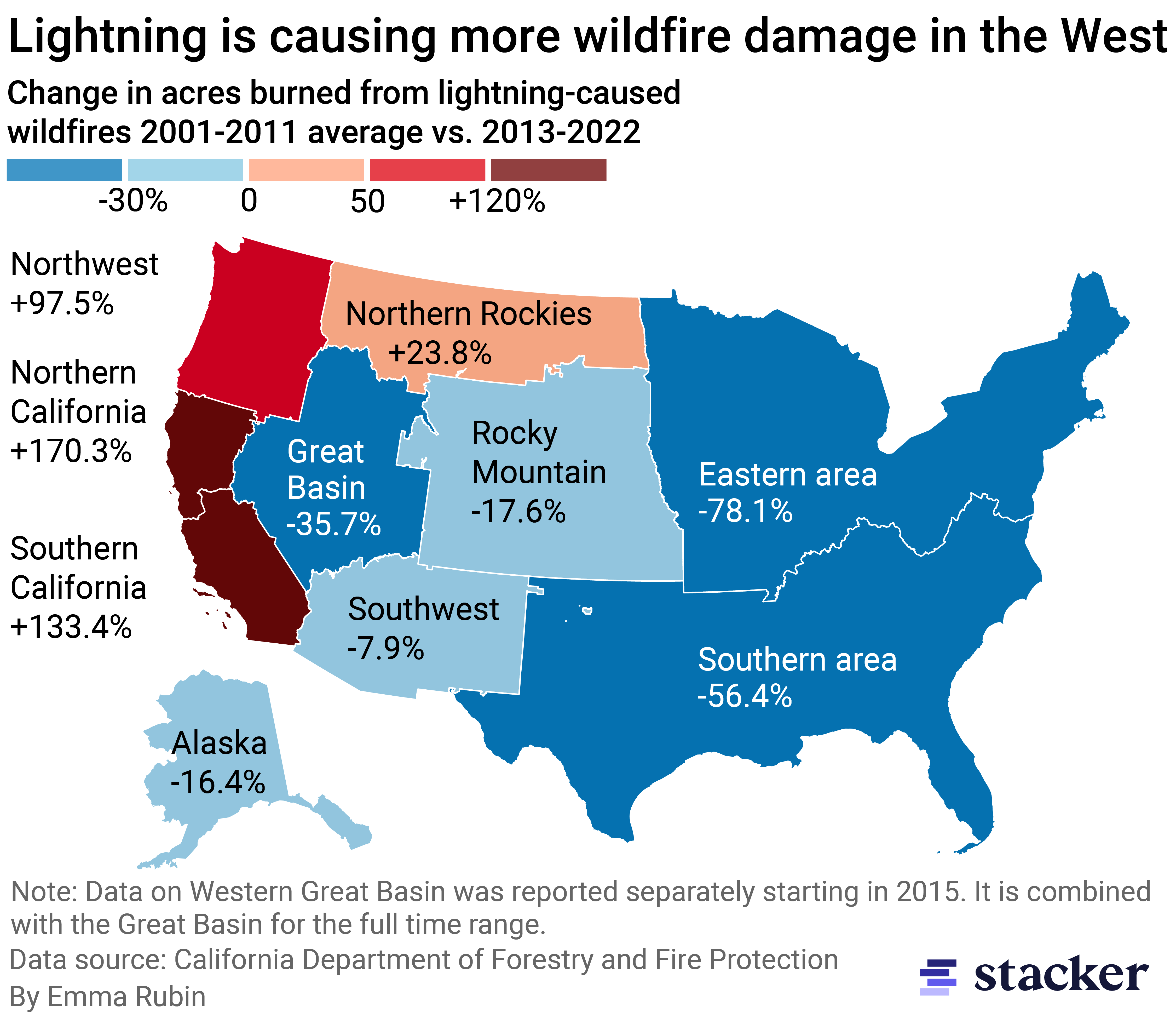
Lightning fires are causing more damage in the West
At the national level, 89% of wildfires were caused by humans in 2022, but human-caused wildfires contributed only to 44% of total acreage burned. In the Southern and Eastern U.S., human-caused fires still cause the most damage, but elongated dry seasons in the West have intensified the impact of lightning when it does strike.
Dry lightning is created through high-altitude thunderstorms. Extreme heat and drought can cause rain to evaporate before it reaches the ground. Lightning fires can also pose greater damage because it can take longer for them to be detected, whereas human-caused fires are often closer to towns and high-traffic areas. Winds associated with dry thunderstorms can further fan the flames as well. These factors mean that even as the West is less prone to lightning than other parts of the country, the bolts can spark more damage.
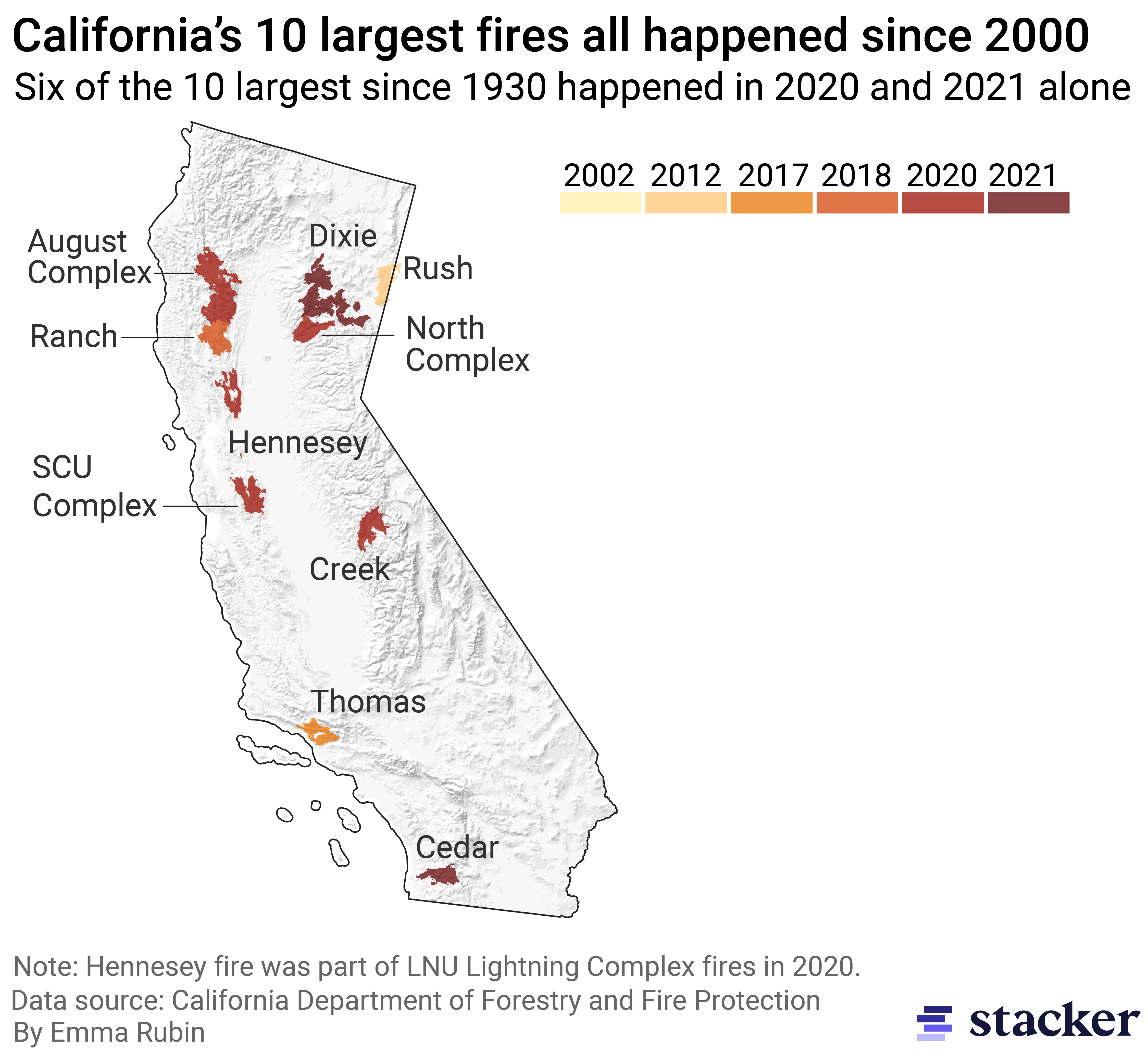
California's wildfires continue to set records
While lightning has sparked some of the most devastating fires in California, powerlines have also fueled far-reaching damage. Contact with overgrown trees, downed lines, and frayed wires can spark flames. Pacific Gas & Electric was held responsible for the 2018 Camp Fire and 2019 Kincade Fire and has instituted rolling blackouts on high-risk wildfire days.
Even as the origin of fires varies, each is exacerbated by existing environmental factors. A 2018 survey from the USDA Forest Service identified nearly 150 million trees that died between 2010-2018 in California. Two years later, 2020's record season burned nearly 4.4 million acres, and the five largest megafires happened concurrently in August and September. The season demonstrated how the buildup of vulnerable trees can ignite unprecedented spread.
A 2021 aerial survey by the USDA Forest Service offered some hope. Annual tree mortality declined over a five-year period, with an estimated 9.5 million dead trees in the state spanning more than 1 million acres, although tree mortality remains at a much higher rate than California's pre-drought levels in the early-2000s.



